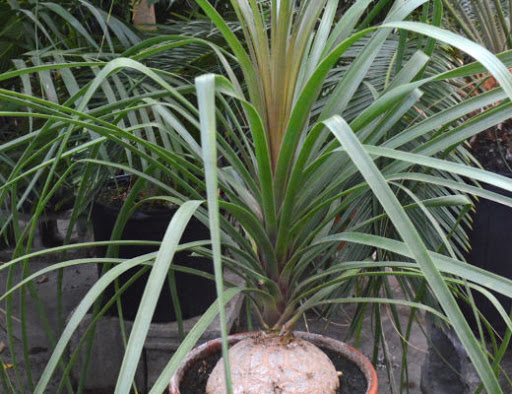
Proper Name: Nolina recurvate
Common Names: Ponytail palm, Elephant foot palm
Light Needs: High Light
Best Temperatures: Average room temperature and a little cooler in winter. 75ºF (24ºC)
Water and Humidity Needs: Let soil dry out between watering. These can tolerate dry air.
Growing Guidelines: Fertilize annually in the spring with a well-draining soil, and wait several years between repotting.
Common Problems: Too little sun causes limp, pale leaves.
Propagation: Re-pot offsets.
Ponytail palm is a slow growing, easy-to-care for plant that can tolerate drought. This plant generally only grows in the spring, so take care to give it the best conditions during the spring.
Ponytail palms are unique, decorative and intriguing. They are evergreen plants native to specific eastern areas of Mexico.
The ponytail palm belongs to the family Asparagaceae, a family of flowering plants, and it is one of at least nine species in the Beaucarnea genus, and it has the scientific name Beaucarnea recurvata,
It is also known as an ‘elephant’s foot, a ‘ponytail plant’ and a ‘ponytail palm tree’, and despite its common name, it is not technically a species of palm. Ponytail palms have an enlarged trunk base and long, drooping, green leaves that can be 40 inches long. They became known to Europeans in 1870, when they were discovered by the French, and the plants later became available in various parts of the world.
This is a perennial plant that can grow anywhere from 6 to 30 feet in height. They prefer a sunny position in well-drained soil, and they can tolerate drought conditions. Ponytails palms are commonly used in recreational areas or home gardens for ornamental purposes.
Water is gathered internally in the base of the ponytail palm trunk; and the plant exterior should not be sitting in water for long periods, as rotting can occur. Ponytail palms usually do not bloom until they are ten years old, and when the plant is mature enough it will flower during summer, with clusters of white to cream flowers.
Related Articles
Deep Cleaning in the Greenhouse




Comment here